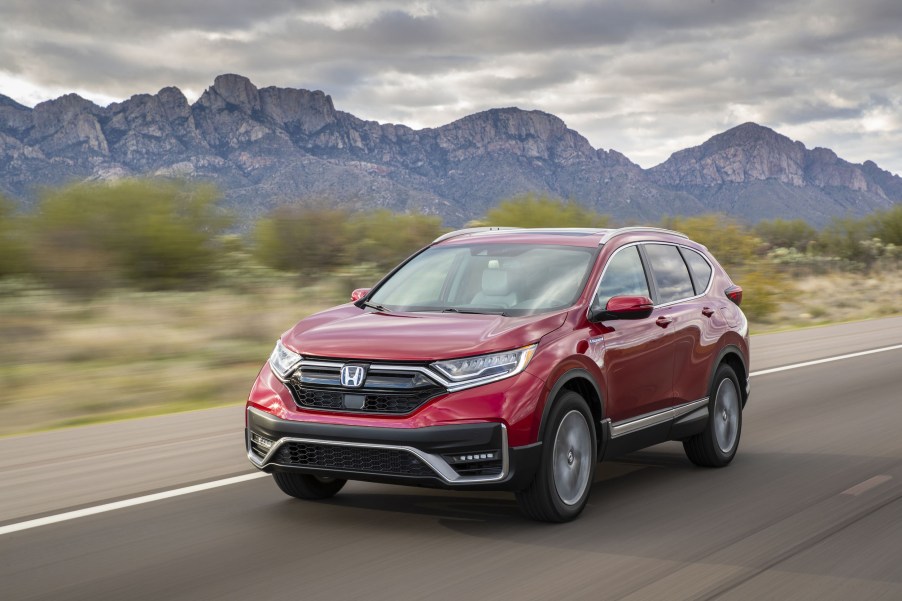
Why Are Some Hybrids More Powerful Than Gasoline-Powered Cars?
Hybrid cars have come a long way since Austrian industrialist Ludwig Lohner teamed with Ferdinand Porsche to create the Semper Vivus, Latin for “forever alive,” which debuted at the 1900 Paris World’s Fair. Sporting hub-mounted electric motors on the front wheels fed through twin generators powered by two one-cylinder De Dion-Bouton 2.5-hp gasoline engines, the Lohner-Porsche prototype was the first to demonstrate how electricity and gasoline can be mated for propulsion, The Drive explains.
Although hybrid technology took a hiatus for most of the 20th century, it came back in the late 1990s to reduce greenhouse gas emissions plaguing the planet. While many are focused on using hybrid technology to preserve the automobile for generations to come, others are tapping into the immediate power electrical motors have to offer, enhancing the output of the internal combustion engine (ICE).
Why are hybrid cars so fast?
A typical ICE must increase its revolutions per minute (RPM) of the crankshaft to achieve its optimal performance, measured by its torque curve. Typically, it takes a few seconds to spin the engine up to its maximum power figure, apart from a few uniquely-designed engines like the 4.8-liter V10 from the Lexus LFA, which revved from idle to its 9,000-rpm redline in 0.6 seconds. Regardless, all ICE vehicles will have some lag time.
Electric engines, on the other hand, produce all their torque instantly. Although an electric motor’s torque will drop with higher speeds, it’s more than enough to sprint off the line against anything outside an official NHRA drag racing event. Since a hybrid powertrain uses both systems, an electric motor can fill in the gaps left by an ICE gaining rpm or between gear shifts.
Mainstream car models with hybrid powertrains

A little over a decade ago, most hybrids purchased were either a Toyota Prius or Nissan Leaf. However, it’s now common to see hybrid variants of gas-powered vehicles. While many prioritize fuel efficiency over sheer performance, some hybrids pack more of a punch than their fossil fuel-only counterparts.
For instance, the Honda CR-V’s 1.5-liter turbocharged four-cylinder engine produces 190 horsepower and 179 lb-ft of torque while achieving 29 mpg, Kelley Blue Book reports. Yet, the hybrid version puts out 212 horsepower and 232 lb-ft of torque through its 2.0-liter engine and two electric motors, giving drivers an EPA-rated 38 mpg combined.
Larger vehicles also have hybrid options, even full-size pickup trucks. The recently-redesigned Toyota Tundra‘s 3.5-liter twin-turbocharged i-Force Max V6 Hybrid produces 437 horsepower and 583 lb-ft of torque, allowing drivers to tow up to 12,000 lbs. Ford’s F-150 fitted with the 3.5-liter twin-turbocharged PowerBoost V6 puts down 430 horsepower and 570 lb-ft of torque, with a maximum towing capacity of 12,700 lbs.
However, hybrid vehicles have a higher maintenance cost over the vehicle’s life. Yet, manufacturers are mounting the task with generous warranties. For example, the Hyundai Sonata and Kia Sorrento come with a 10-year, 100,000-mile Hybrid/EV warranties.
Supercars enhanced by hybrid engine systems
The perennial platforms on which manufacturers display their engineering limits are expensive, high-performance supercars. 10 years ago, McLaren mated a 727 horsepower twin-turbocharged 3.8-liter V8 to a 177 horsepower single electric motor in the P1 to show the world a 904 horsepower answer to the question of whether hybrid technology had a place in the supercar arena. Likewise, Ferrari’s La Ferrari integrated an F1-style kinetic energy recovery system (KERS) in dual electric motors providing temporary bursts of power and a combined 950 horsepower.
The two utilize hybrid car systems differently, though. Whereas the La Ferrari cannot run on electric power alone and can only use both ICE and KERS together, the P1 is technically a plug-in hybrid. It also boasts a 19-mile electric-only range.
The future of hybrid cars
Hybrid cars have shaken off their seeming undesirableness. Most people, even enthusiasts, are more than welcome to drive a more efficient and powerful vehicle than its gas-powered counterpart.
Today, numerous hybrid vehicles are available for consumers at all price points. Whether it’s the 1,000 horsepower Mercedes AMG One or the 122 horsepower Toyota Corolla Hybrid, anyone can enjoy a quickness off the line gas-powered vehicles simply can’t manage.


